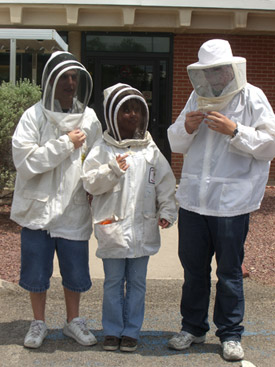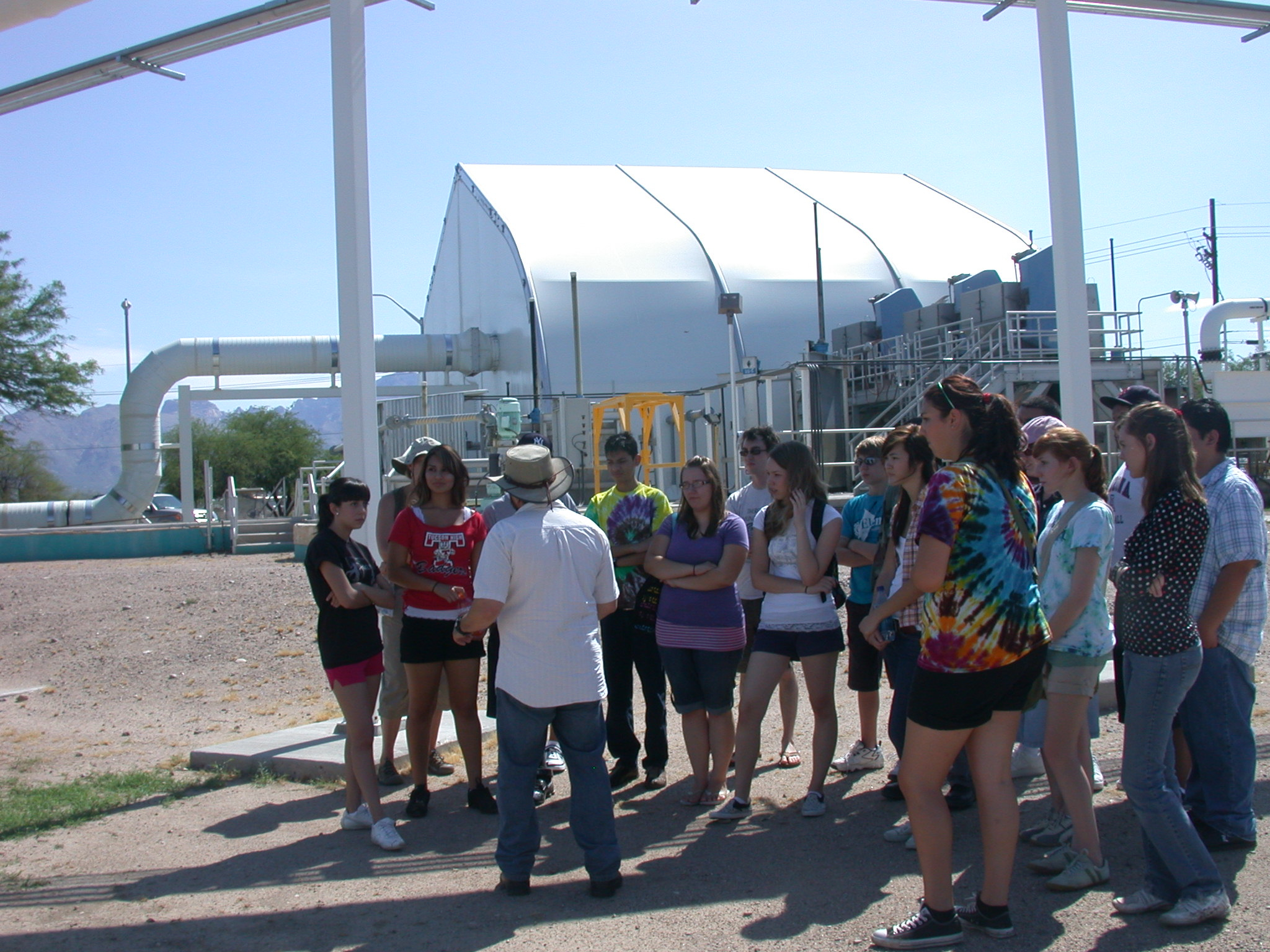
What
makes
GBE
so
unique?

Many
science-related summer
programs rely on educating students using traditional tools, such as
classroom
instruction and lab exercises,
which involve topics that may be
current, but
are highly similar to standard science coursework.
What makes GBE
unique is
that it focuses on teaching students modern molecular techniques in the
context
of actual scientific research. The instructors choose topics that are
both
relevant to current science and involve questions with unknown answers.
Students then formulate hypotheses and are guided in developing
experiments to
test their hypotheses.
GBE also
incorporates a
field component to each course, usually in the form of a day-long field
trip to
a site where students will collect samples to perform experiments on.
This
field aspect allows students to see how their research connects to the
natural
environment around them, and is often rated as the most popular aspect
of the
course.
General
outline of a
GBE Course
A typical schedule for
a GBE course
Days 1-3: Introduction to system, background information, developing hypotheses and experiments, using equipment and technique
Days 3-5: Collect material (field trip), begin experiments
Days 6-10: Data
collection,
data analysis, finish experiments, continued background reading
PREVIOUS
GBE
COURSES
2006 2007
2008 2009
2006 – Functions of
facultative symbionts of the pea aphid
Aphids can
harbor several
facultative bacterial symbionts. Students were introduced to the
biology of the
pea aphid and asked to come up with testable hypothesis as to the
function of
the symbionts. Some of the hypotheses the students came up with were:
Do
any of the symbionts reduce the effectiveness of aphid parasitoid wasps?
Do
the symbionts protect the aphids from heat stress?
Students were
then allowed
to design experiments to test their hypotheses. In addition,
students
learned basic molecular biology techniques, including pipetting skills,
how to isolate
DNA and perform polymerase chain reactions, running and analyzing gel
electrophoresis, and molecular phylogenetics. With these tools,
students were
able to amplify symbiont genes from the aphids, sequence them at the UA
Genetics Core Facility, and analyze their results using NCBI. Students
then
created phylogenetic trees to better understand how the symbionts were
related
to other bacteria.
2007 – Microbiota of
the European honeybee, Apis mellifera
In 2007, GBE
shifted focus
to another insect, the honeybee (Apis mellifera). Reports were surfacing that honeybee
colonies were
dying in record numbers in what became known as
Colony Collapse
Disorder. The
students again applied molecular techniques to look at bacteria
associated with
the honeybee. Some questions the students examined this year were
What
bacteria are associated with bee products including honey, royal jelly,
and bee
bread?
Do
Africanized honeybees differ in their microbiota from European
honeybees?
What
parts of the honeybee digestive system harbor bacteria?
Students again
utilized
molecular techniques, including cloning of bacterial 16S genes, to
identify
microbes associated with the bees. This year,
students were able to
submit 16
bacterial DNA sequences to Genbank (accession numbers gi155007950 –
155007935).
Using both NCBI and the Ribosomal Database project, students were able
to
classify their sequences using molecular phylogenetics. This
year’s
field
trip
was
to the Carl Hayden USDA Bee Research Center in Tucson (right).
2008 – Searching for symbionts in Hymenoptera
Students went to
Florida
Canyon in the Santa Rita Mountains south of Tucson and collected native
Hymenoptera (bees, ants and wasps). Students then identified the
insects they
collected, and performed DNA extractions. Using PCR and cloning,
microbes from
the Hymenoptera were identified using molecular phylogenetics. This
year the
students did a more descriptive project, but focused on the following
questions:
Are there any Bacteria common to all Hymenoptera?
How do culture dependent and independent methods compare in characterizing Hymenoptera microbiota?
Do
different groups of Hymenoptera vary in their microbiota?
2009 – Antibiotic
resistance in various aquatic habitats and in aquatic insects
This year we focused on cultivatable microbes from several environments. The students collected water from two field sites: Madera Canyon Creek in the Santa Rita Mountains and the Santa Cruz River at Tubac, Arizona. The Madera Canyon site was a relatively undisturbed environment, while the Santa Cruz River is downstream of a wastewater treatment facility. At both sites, aquatic insects were collected and microbes were cultured on various antibiotic media. Some of the questions students examined were:

Do
insects have higher or lower abundances of antibiotic resistant
bacteria in
their gut
than the surrounding environment?
What
environmental
microbes
are often antibiotic resistant?
This year we
also visited
the Roger Road Waste Water Treatment Facility in Tucson (right). Here,
students
learned
about how wastewater is treated, and the facility provided us with
samples that
the students examined for antibiotic resistant bacteria. In addition to
questions related to disturbed and undisturbed environments, students
examined
the following question:
Does
the proportion of antibiotic bacteria change during wastewater
purification?